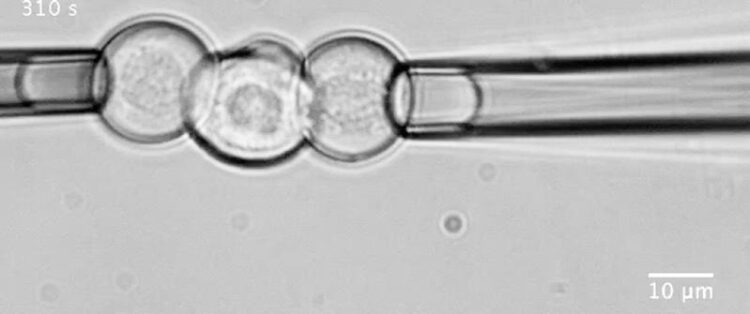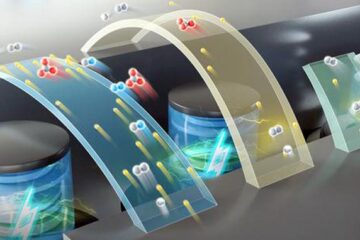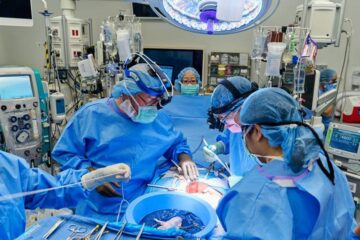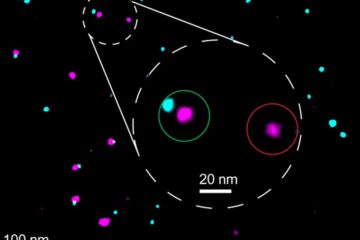Sticking together

Determination of neural progenitor cell-cell de-adhesion forces using micropipette aspiration / IST Austria
In unraveling how a single cell develops into a complex organism, one vexing question has remained for developmental biology: How do robust patterns form in the body? An answer has now been found for the zebrafish neural tube. In this paradigm of patterned tissues, the varying stickiness of cells combined with gradients of signaling molecules is responsible for generating a robust pattern. This is the result of a study published in Science, carried out jointly by the lab of Carl-Philipp Heisenberg at the Institute of Science and Technology Austria (IST Austria) and the lab of Sean Megason at Harvard Medical School.
Adhesion, the missing piece
Going from the ventral to the dorsal side, the neural tube, the precursor to the central nervous system, is strikingly organized into domains of cells with different identities and fates. One hypothesis for how this pattern is created is the so-called French Flag model. According to this hypothesis, a signaling molecule sets up a gradient across a field of cells, and a cell “knows” its location within the field, and consequently its identity, by the amount of signaling molecule it receives.
However, cells move around as an organism develops, disrupting the strict division into domains. An additional mechanism is needed to maintain the domains. Combining a range of genetic, developmental and biophysical experiments, the groups of Carl-Philipp Heisenberg and Sean Megason, with first author Tony Tsai carrying out experiments in both labs, have been able to solve the puzzle: Adhesion, or the “stickiness” of cells, is the factor that keeps cells of the same domain together, and cells of different domains apart.
Differences in binding induce cell sorting
The Heisenberg lab at IST Austria has developed several biophysical tools with which they can test how strongly cells stick together – for example, by measuring how much force is needed to pull cells apart. Applying this to cells from the zebrafish neural tube, the researchers found that cells belonging to the same domain stick together tightly, while cells from different domains are more easily separated. “This difference in the binding force can induce sorting processes”, explains Heisenberg.
The difference in “stickiness” corresponds with a differential expression of adhesion proteins in the domains, the researchers further found. The different cell types express different classes of cadherins: N-cadherin, Cadherin 11, and Protocadherin 19. When the researchers interfere with this expression, making cells express more or less of a certain cadherin, preferential adhesion and correct cell sorting are lost.
“Our experiments show that a sorting process based on adhesion, together with a gradient of the signaling molecule Sonic Hedgehog, leads to a precise sorting of cells into domains based on their cell type”, concludes Heisenberg. “By combining experiments from biophysics, genetics, and developmental biology, we were able to successfully solve this long-standing question.”
Originalpublikation:
2020. Tony Y-C. Tsai, Mateusz Sikora, Peng Xia, Tugba Colak-Champollion, Holger Knaut, Carl-Philipp Heisenberg, Sean G. Megason. An adhesion code ensures robust pattern formation during tissue morphogenesis. Science. DOI: 10.1126/science.aba6637
Media Contact
All latest news from the category: Life Sciences and Chemistry
Articles and reports from the Life Sciences and chemistry area deal with applied and basic research into modern biology, chemistry and human medicine.
Valuable information can be found on a range of life sciences fields including bacteriology, biochemistry, bionics, bioinformatics, biophysics, biotechnology, genetics, geobotany, human biology, marine biology, microbiology, molecular biology, cellular biology, zoology, bioinorganic chemistry, microchemistry and environmental chemistry.
Newest articles

High-energy-density aqueous battery based on halogen multi-electron transfer
Traditional non-aqueous lithium-ion batteries have a high energy density, but their safety is compromised due to the flammable organic electrolytes they utilize. Aqueous batteries use water as the solvent for…

First-ever combined heart pump and pig kidney transplant
…gives new hope to patient with terminal illness. Surgeons at NYU Langone Health performed the first-ever combined mechanical heart pump and gene-edited pig kidney transplant surgery in a 54-year-old woman…

Biophysics: Testing how well biomarkers work
LMU researchers have developed a method to determine how reliably target proteins can be labeled using super-resolution fluorescence microscopy. Modern microscopy techniques make it possible to examine the inner workings…





















